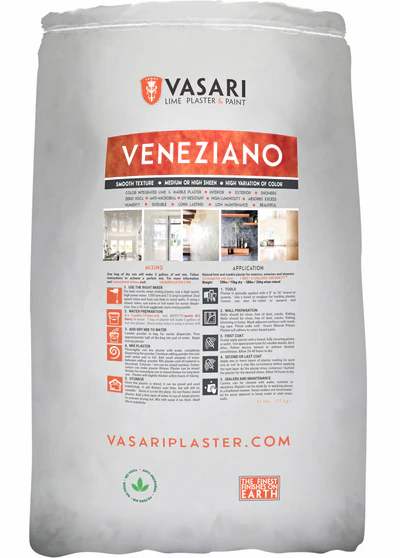Lime plaster has been a staple in building materials for millennia, known for its durability, natural composition, and aesthetic appeal.
The Historical Significance of Lime Plaster
Ancient Beginnings: Lime plaster’s history dates back to ancient civilizations, including the Egyptians and Greeks, who recognized its protective and decorative properties. The Romans enhanced the formula, adding volcanic ash (known as pozzolana) to create a hydraulic lime plaster that could set underwater, revolutionizing construction techniques.
Medieval and Renaissance Use: During the medieval period, lime plaster continued to be a primary material for creating durable, fire-resistant walls. In the Renaissance, artisans in Venice refined lime plaster techniques to produce the stunning, smooth finishes seen in Venetian palazzos, giving rise to what we now call Venetian plaster.
Transition to Modern Use
Decline and Rediscovery: With the advent of industrialization, cheaper and faster alternatives like gypsum and cement plasters gained popularity. However, these materials lacked the breathable and flexible properties of lime plaster, leading to a resurgence in its use as the shortcomings of modern materials became apparent, particularly in historic preservation.
Contemporary Applications: Today, lime plaster is celebrated not only for its historical significance but also for its sustainability and health benefits. It is used in both restoration projects and new constructions, especially in eco-friendly buildings looking to capitalize on its natural properties.
Benefits of Modern Lime Plaster
- Sustainability: Lime plaster is made from limestone, a plentiful resource, and its production emits less carbon dioxide compared to cement. It is also fully recyclable, aligning with modern environmental goals.
- Indoor Air Quality: Lime plaster is naturally mold-resistant and can regulate humidity, which helps maintain a healthier indoor environment, a significant benefit in modern green building designs.
- Aesthetic Flexibility: Modern lime plaster can be tinted with natural pigments, offering a range of colors and textures. Its ability to create seamless surfaces is highly valued in contemporary minimalist architecture.
- Durability and Repairability: Like its ancient counterparts, modern lime plaster remains durable and easy to repair, which reduces the need for replacement and fits well with sustainable building practices.
Conclusion
Lime plaster bridges the gap between ancient and modern, combining historical techniques with contemporary needs. Its resurgence in the construction industry underscores a return to more sustainable, health-conscious building materials. Whether restoring historical monuments or designing cutting-edge, eco-friendly homes, lime plaster remains as relevant today as it was thousands of years ago.
See Also: lime plaster.
FAQs
What makes lime plaster suitable for historical restoration?
Lime plaster is breathable and flexible, which is crucial for older buildings that need materials that can adapt to structural shifts without trapping moisture.
How does lime plaster contribute to sustainable building practices?
It is made from natural, abundant materials and promotes healthier indoor air quality, aligning with sustainable building standards.
Can lime plaster be used in exterior applications?
Yes, lime plaster is excellent for exteriors due to its durability and ability to withstand harsh weather conditions when properly mixed and applied.
What are the main differences between lime plaster and other types of plaster?
Unlike gypsum or cement plaster, lime plaster is more flexible, breathable, and environmentally friendly, making it ideal for both restoration and modern sustainable construction.



